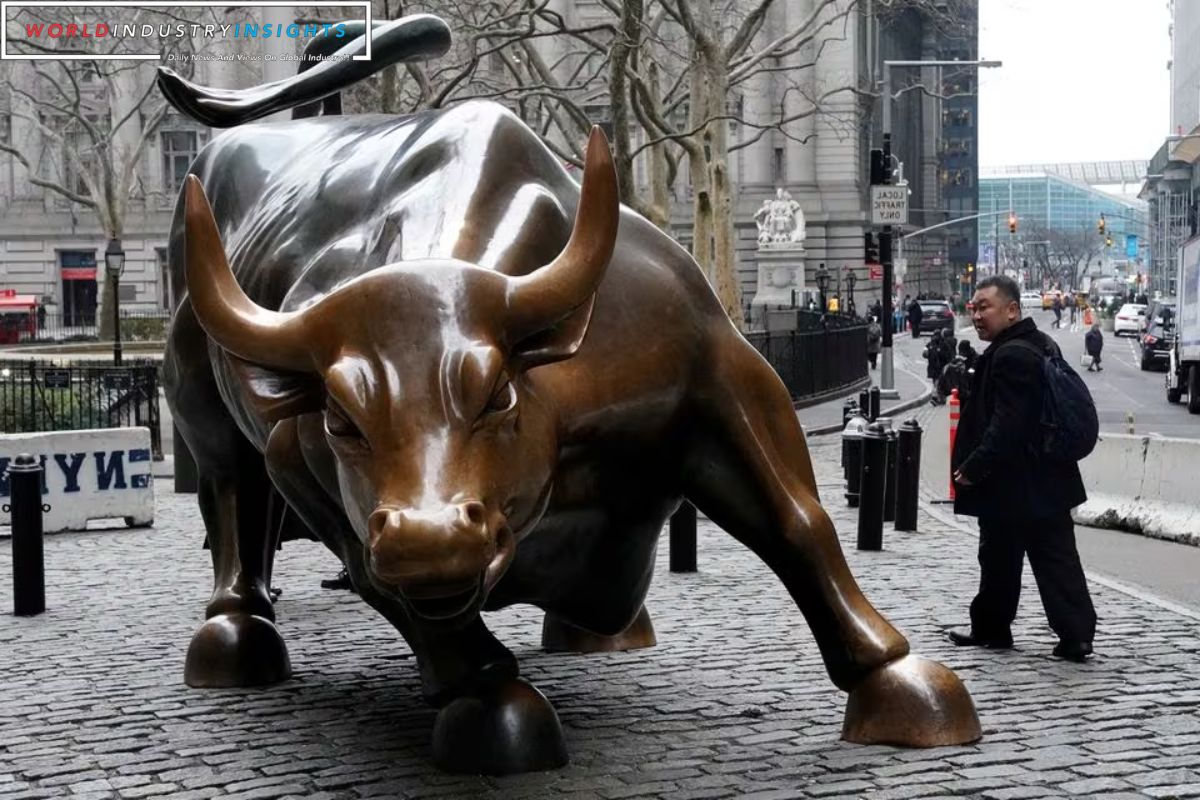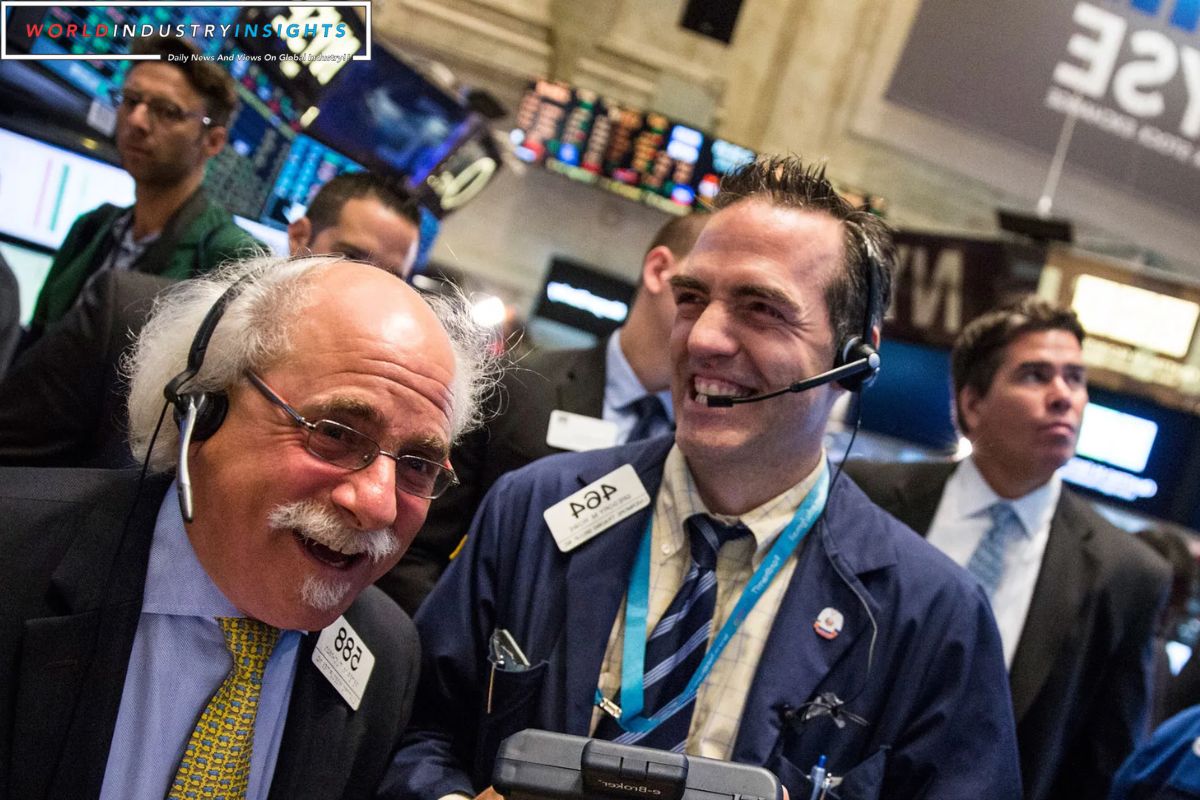Market Dovish Waltz: The latest Federal Reserve-Wall Street tango suggests U.S. stocks may be headed for record highs. The Federal Reserve’s recent dovish turn has boosted market optimism, but some investors worry about the quick ascent given economic and corporate profit risks.
During the latest meeting, the Fed opted to keep interest rates unchanged and hinted at a more dovish outlook than anticipated, signaling that the era of historic tightening in U.S. monetary policy might be drawing to a close. The prospect of lower borrowing costs in 2024 sent the stock market soaring, with the S&P 500 posting its most significant gain on a day coinciding with the Fed’s policy statement since July 2022. Simultaneously, Treasury yields took a nosedive, with the benchmark U.S. 10-year Treasury yield hitting its lowest point in four months.
Matthew Miskin, co-chief investment strategist at John Hancock Investment Management, expressed the market’s enthusiasm, noting, “The Fed is done raising rates, and the market could not be more thrilled to have higher conviction in that.” This newfound alignment between the Fed’s outlook and that of investors suggests a more dovish overall sentiment in the markets.
With 17 out of 19 Fed officials projecting a lower policy rate by the end of 2024, the median projection indicates a decline to 4.6% from the current 5.25%-5.50% range. While this mirrors market expectations, there remains a nuanced difference in the overall outlook. The S&P 500, now just shy of 2% below its January 2022 record, could potentially close the year on a high note, mirroring or even surpassing its previous peak.
The final weeks of December, historically favorable for the S&P 500, might benefit from seasonal factors. December, ranking as the third-best month for the index since 1950, typically witnesses stronger performance in the latter half. Furthermore, the market could gain support from former bearish investors abandoning their positions.
Also Read: Asian Stocks Rally as Fed Adopts Dovish Stance, Sparking Market Optimism
However, the critical question lingers about how much of the Fed’s dovish stance has already been baked into a market that has surged over 22% this year. As the economy strives to strike a delicate balance between cooling inflation and sustaining growth in 2024, investors are tasked with evaluating whether the “Goldilocks” narrative can endure.
Despite the optimism, a note of caution is present among some investors. Miskin’s firm maintains a slightly underweight position in stocks compared to bonds, reflecting a somewhat defensive stance. The current forward earnings estimates for the S&P 500, standing at 19.1 times, compared to its long-term average of 15.6 times, hints at a market that might be pricing in a significant degree of optimism. Earnings for S&P 500 companies are projected to rise by 11.4% in 2024 following a 2.6% increase in 2023.
Mike Sanders, head of fixed income at Madison Investments, suggests that the market is more aggressive in its cuts than even the Fed’s dovish statement indicates. The focus over the next six months will center on whether inflation can continue to recede while the job market maintains stability.
As we approach the conclusion of the holiday season, market observers like Carol Schleif, chief investment officer with the BMO Family Office, will closely monitor consumer health and their ability to absorb higher credit card bills post-holiday spending spree. The challenge in the coming months will be to ensure that the soft landing anticipated by the Fed doesn’t take an unexpected turn into a more pronounced economic downturn.
Jason Pride, chief of investment strategy and research at Glenmede, acknowledges that the Fed’s latest economic projections seem to suggest a soft landing. However, he raises a cautionary flag, noting that maintaining rates at this level for an extended period without causing collateral damage to the economy is uncharted territory. As the market navigates these uncharted waters, the delicate dance between optimism and caution will chart the course for U.S. stocks in the months ahead.
Our Reader’s Queries
What does dovish mean in markets?
Financial terms can be tricky to understand, especially when it comes to the tone of language used to describe a situation and its implications for actions. Take the term “dovish,” for example. This refers to a cautious or hesitant approach, often used by the Federal Reserve bank when discussing inflation. If they use a dovish tone, it’s unlikely that they will take aggressive actions. Understanding these nuances can help you make informed decisions about your finances.
Which is better hawkish or dovish?
Our findings indicate that a dovish response is favorable for fiscal expansions, while a hawkish response may lead to a decline in GDP but effectively manages inflation expectations.
Is Alan Greenspan hawkish or dovish?
During his tenure as chair of the Fed from 1987 to 2006, Alan Greenspan was initially known for his hawkish stance. However, over time, he shifted towards a more dovish approach. Similarly, Ben Bernanke, who served as chair from 2006 to 2014, also displayed a mix of hawkish and dovish tendencies during his time in the post.
What is meant by dovish and hawkish?
When central bankers discuss the possibility of maintaining low interest rates and promoting economic growth, it’s a sign that the market is leaning towards a dovish stance. Conversely, if central bankers are discussing the potential for increasing interest rates and managing inflation, it’s an indication that the market is taking a hawkish approach. By paying attention to the language used by central bankers, investors can gain valuable insights into the market’s current sentiment and adjust their strategies accordingly.


